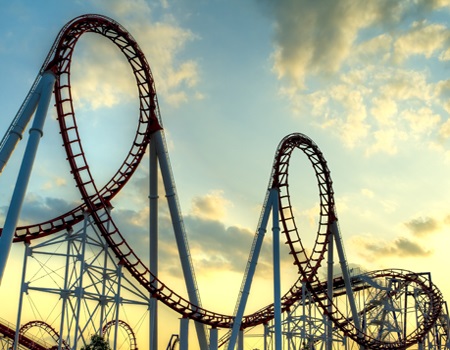The 2016 Rollercoaster Ride

You know you’re deep into a longstanding bull market when average investors are tuning into CNBC to see if the Dow Jones Industrial Average has finally breached the 20,000 mark. Who would have imagined record market highs at this point last year, when the indices ended 2015 in negative territory? You’ll recall 2016 got off to a terribly rocky start, tumbling 10% in the first five weeks—the worst start to a year since 1930.
The markets eventually bottomed in mid-February beginning a long, slow recovery that turned positive by the end of March but suffered a brief setback when the U.K. decided to leave the Eurozone. In the end, though, the U.S. bull market continued for another year. Large cap U.S. stocks, as measured by the S&P 500 Index, finished up 11.9% for 2016. The Russell Midcap Index gained 13.8% for the year, and U.S. small stocks were the biggest winners as the Russell 2000 Small-Cap Index finished the year up 21.3%.
International investments contributed less to overall portfolio returns as the broad-based EAFE Index of companies in developed foreign economies increased only 1.0% for the year. In contrast, emerging markets stocks gained 11.2%.
In the bond markets, it’s likely that the decades-long bull market—which basically means declining interest rates—has ended, and the fixed-income world is experiencing rate increases. When interest rates go up, bond prices go down, and conservative investors saw the impact of rising rates on their portfolios after the election. Bonds, as represented by the Barclays Aggregate Index, lost 3% in the fourth quarter, cutting their total return for 2016 to 2.6%.
What did the average investor in a well-diversified portfolio earn for 2016? Our moderate investors’ portfolios (about half stocks and half bonds) earned between 5% and 7% depending on their cash flows and allocation to international stocks and alternative assets. Our conservative investors’ portfolios (holding mostly bonds) were up 1% to 3% for the year, again depending on cash flows.
What’s going to happen in 2017? Short-term market traders seem to be expecting a robust economic stimulus combined with lower taxes and deregulatory policies that would boost the short-term profits of American corporations. However, it is helpful to remember that we are entering the ninth year of economic expansion, making this the fourth longest since 1900. In addition, growth has not exactly been robust—the U.S. GDP has averaged just 2.1% yearly increases since the Great Recession, making this the most sluggish of all post-World War II expansions.
Slow but steady has not been a terrible formula for workers or stock investors. The unemployment rate has slowly ticked down from a post-recession peak of 10% to less than 5% currently. U.S. stock indices are posting record highs with double-digit gains, and that Dow 20,000 level, while essentially meaningless, is still catching a lot of attention.
It’s clear that the President-elect wants to accelerate America’s economic growth, but the policy prescription is not known at this point. Will we revise longstanding trade agreements? Will the government invest in huge infrastructure projects? Will taxes be reduced? Will the national debt increase? Will the Fed aggressively raise interest rates? The answers to these questions will certainly impact stock market returns.
At the same time, there are many unknowns around the globe. China’s economic growth has stalled for the second consecutive year. There is a banking crisis in Italy that could force the country to leave the Eurozone. There is also still talk of a possible Greek exit from the Eurozone. Unfortunately, there likely will be a continuation of terrorism in Europe and elsewhere. All of these factors weigh into the returns we might expect from international investments, which are otherwise attractively priced.
As this longstanding bull market progresses, every year we have to look over our shoulders and wonder when and how it will end. With the January 2016 downturn and so much uncertainty at this time last year, nobody could have predicted double-digit returns on U.S. stocks at year-end. This year could bring more of the same, or it could fulfill the dire predictions many have made during the election cycle, including both Democrats and Republicans who believe the country is in worse shape than the numbers would indicate.
We have been reminded over the last few years that the markets have a way of surprising us, and that trying to time the market and get out in anticipation of a downturn is a loser’s game. At the county fair, when we get on the rollercoaster, we don’t bail out and jump over the side at some scary point on the track; we hang on for the ride. The history of the markets has been a general upward trend that benefits long-term investors. As we look to the future, this upward trend, with perhaps a few hard bumps along the way, is the best outcome to expect.
